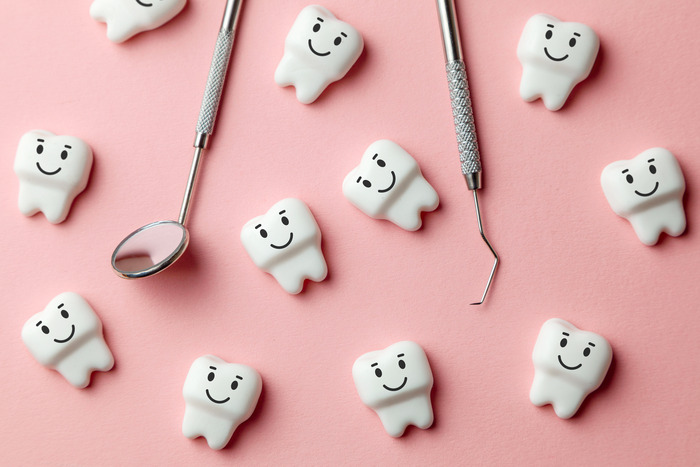
The American Dental Association does a lot of work to create a guideline for parents that helps guide them when it comes to their child’s oral health. Their recommendations extend into adulthood. In addition, your dentist likely has given you guidance on how to follow a proper oral health regimen. Let’s talk about how closely we follow the guidelines for oral health that we are given
Do People Brush Their Teeth Twice A Day?
Believe it or not, most people brush their teeth twice a day. The American Dental Association recommends that people brush their teeth at least twice a day. The average American does this, clocking in at one minute and fifty-two seconds according to Dentistry IQ. Although most Amercians brush twice a day, over 30% of us do not. In addition 23% of Americans report going two or more days without brushing their teeth in the past year.

What Can Happen If You Don’t Brush Your Teeth?
Many people don’t realize the importance of brushing their teeth. Others know the importance but think they won’t have problems if they don’t brush regularly. The ADA recommends brushing twice daily for good reasons. The consequences of not brushing can have severe effects on your oral health. Some of the poor effects lack of brushing might have on your teeth are:
- Bad breath: one of the more obvious signs of poor oral health is bad breath. The bacteria that builds up in your mouth from leftover food particles will begin to rot and have a bad odor.
- Tooth decay: if you do not brush your teeth regularly, plaque will begin to build, which can break down your tooth enamel. This will begin to cause bad breath. In addition, it will lead to more serious problems in your mouth that could necessitate a crown, filling, or root canal.
- Stained teeth: if you drink a lot of coffee or wine or smoke frequently and don’t brush regularly, your teeth can become stained.
- Gum disease: many people have the misconception that it is normal for gums to bleed while brushing. It is not normal. In fact, this is potentially a sign that you have gum disease or the onset of gum disease.
Do People Really Floss Every Day?
If you thought that we have work to do when reaching the ADA’s recommended brushing standards, you might not be shocked that the same can be said for flossing. In fact, only 41% of people say they floss once per day. Lack of flossing seems to be a bigger problem with men than it is with women. Women are over 10 percent more likely than men to floss on a daily basis.
How Often Do Most People Go To The Dentist?
You should see the dentist twice a year or on average every six months for a routine check. Statistically, almost 25% of Americans have gone more than five years without seeing the dentist. In addition, 12% of people have gone more than ten years without seeing the dentist. That means, however, that fortunately over 75% of the population sees the dentist annually.
When Should You Schedule Your Child’s Frist Dental Appointment?
Many parents might be surprised by how early on their child should have their first dental appointment. According to the American Dental Association, your child should be seen by the dentist within 6 months of their first tooth appearing and no later than their first birthday. Surprisingly, 40% of children under the age of three have been to the dentist. It is important for your child to see the dentist at an early age to prevent oral health issues. In addition, it creates a habit of going to the dentist and can help your child avoid dental phobias down the road.
Why Do Some People Not Go To The Dentist?
You might be surprised by the number of people who see the dentist regularly. Many people who have the ability to see the dentist elect not to. One major factor that may determine when someone sees the dentist is dental insurance. Studies show that nearly 80% of people who have dental insurance see the dentist at least once per year. Compare that to just over 50% of people without dental coverage who see the dentist each year.
Age, Income, And How They Relate To Cavities?
Since the 1960s, our nation’s oral health has greatly improved. However, not all Americans have equal access to these improvements. Some groups cannot afford to pay out of pocket for dental care, do not carry private or public dental insurance, or cannot find time off of work to get proper dental care.
Regular dental visits are important for optimal oral health so that patients can find and stop problems early on, however, many people don’t get the care that they need. According to the CDC, in 2015, the percentage of people in the United States with no dental insurance was 29% overall and 62% for older adults. Traditional forms of Medicare do not cover routine dental care. Because of this, many people lose their dental benefits when they retire.
Studies show that children from low-income households are more adversely affected by lack of dental care than children from higher-income households. For children between the ages of 2 and 5, a high percentage from low-income households have untreated cavities in their primary teeth. This is 3 times higher than the percentage of children from higher-income homes. These numbers tend to reduce with age, however, from a young age, the gap is staggering.
